The original Surface Studio in 2019: How is it holding up?
The Surface Studio is now two years old, which is super old in tech years. So, how is it holding up in 2019, and should you buy one?
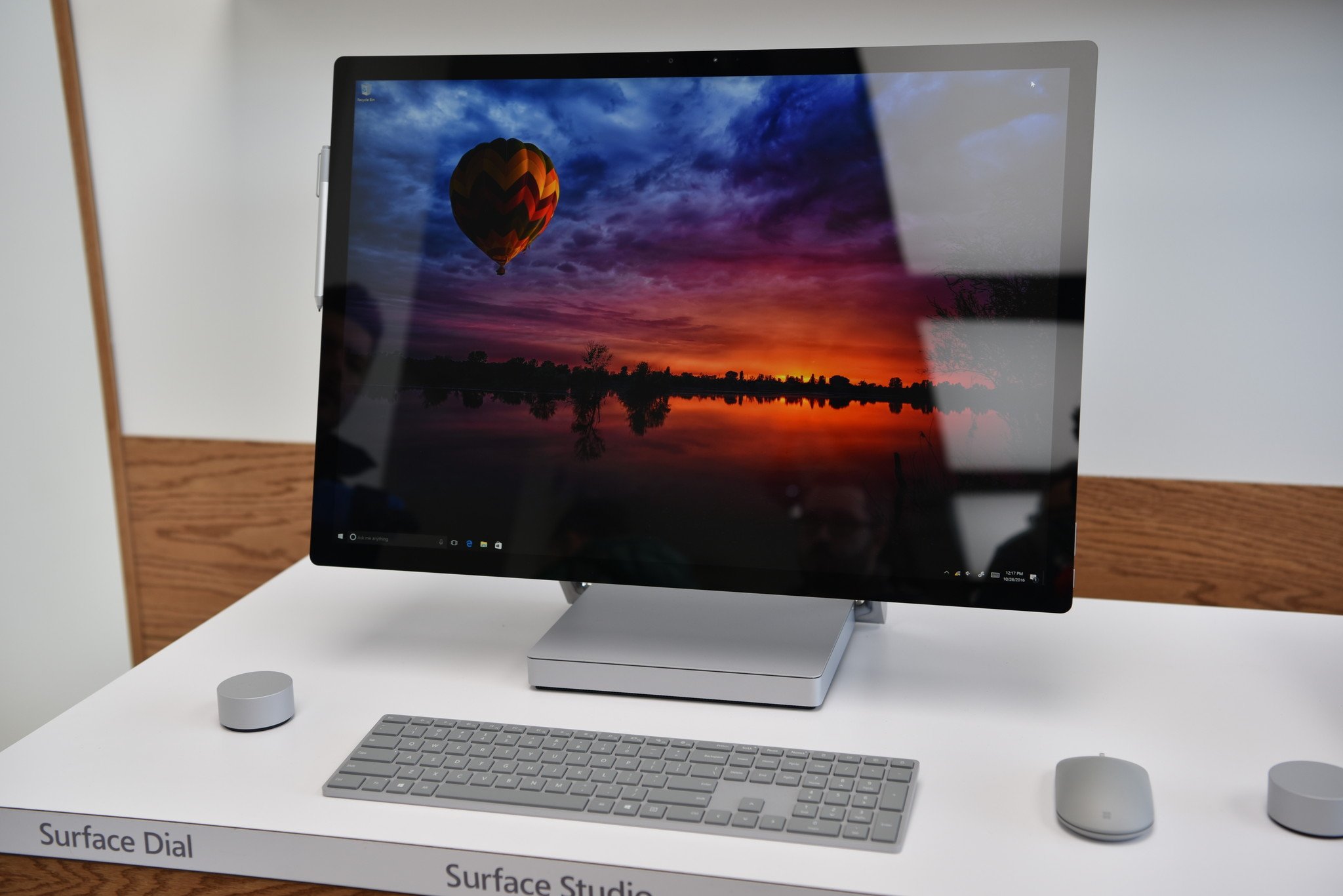
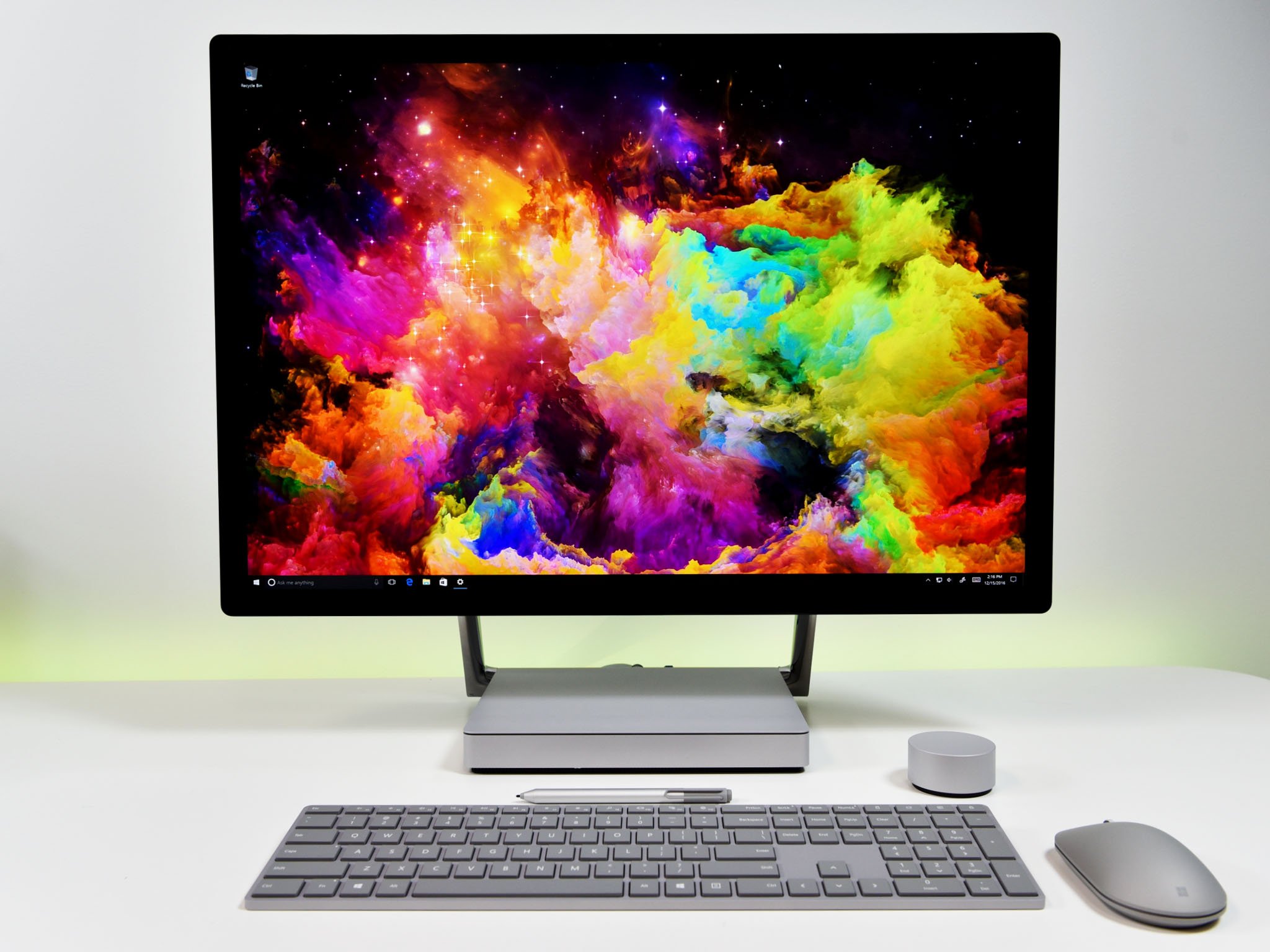
I think it's safe to say that the unveiling of the original Surface Studio back in 2016 was nothing short of magical. While we did know that Microsoft was working on a desktop PC, none of us were quite expecting what we were getting when its sizzle video started playing. An all-in-one PC, beautiful enough to rival the iMac, but with a hinge mechanism that transforms the display into a draft board when required.
The Surface Studio is just so "Surface," taking a form-factor that's been standard in the industry for a long while and turning it on its head. What if an all-in-one could be more than just a screen with a PC behind it, that's what Surface Studio tried to answer, and it did. It's the first all-in-one that's also a bit more than an all-in-one, it's a digital canvas for artists and creators too. But the Surface Studio is now two years old, so how is it holding up in 2019?
Design
Kicking things off with design, the Surface Studio is still a looker in 2019. I'd argue it's still the best looking all-in-one PC on the market today, which is no small feat. Apple appears to have dropped the ball in design innovation these last few years, leaving the gate open for hardware makers like Microsoft to leave their mark. And Microsoft nailed it with the Surface Studio, so much so that it's not tweaking the design in the Surface Studio 2 too much, launching in just a few weeks in the United States.
The actual computer inside the tiny base that holds up the display, which keeps everything looking very clean on a desk. Unfortunately, the Surface Studio isn't a PC you can tinker with easily, although it's technically possible to do so. There are even some upgradable components, but Microsoft doesn't recommend opening the Surface Studio at all.
The base itself is not super big, and I noticed recently that the Surface Go is the exact width of the Surface Studio base. That can't be a coincidence. I've also noticed that the fans push relatively warm heat out the right side of the base, so don't put anything there that you wouldn't want slightly warmed. I usually put my cookies there.
OMG THE SURFACE GO FITS PERFECTLY ON THE BASE OF THE SURFACE STUDIO THIS CAN'T BE A COINCIDENCE pic.twitter.com/ejiNWJO2Z4OMG THE SURFACE GO FITS PERFECTLY ON THE BASE OF THE SURFACE STUDIO THIS CAN'T BE A COINCIDENCE pic.twitter.com/ejiNWJO2Z4— Zac Bowden (@zacbowden) August 29, 2018August 29, 2018
The "arms" that hold up the display are chrome, meaning they're super shiny and can show fingerprints and scratches of you treat them poorly. However, in my time with the Surface Studio, I haven't ever really needed to touch the arms at all, meaning mine is still immaculate. You can control the angle of the display just by holding it on either side, and you shouldn't ever need to touch the arms. The chrome coating looks excellent alongside the platinum finish of the Surface Studio.
There are only three buttons on the entire device; power, volume up, and volume down. All three buttons are still very tactile and satisfying to press. I only recently started using the power button the way I use the power button on my Surface Book 2 and Surface Go: as a sleep button. If I step away from my PC, I can tap the power button and put the PC to sleep. It's so much faster than using the Start menu.
Get the Windows Central Newsletter
All the latest news, reviews, and guides for Windows and Xbox diehards.
Display
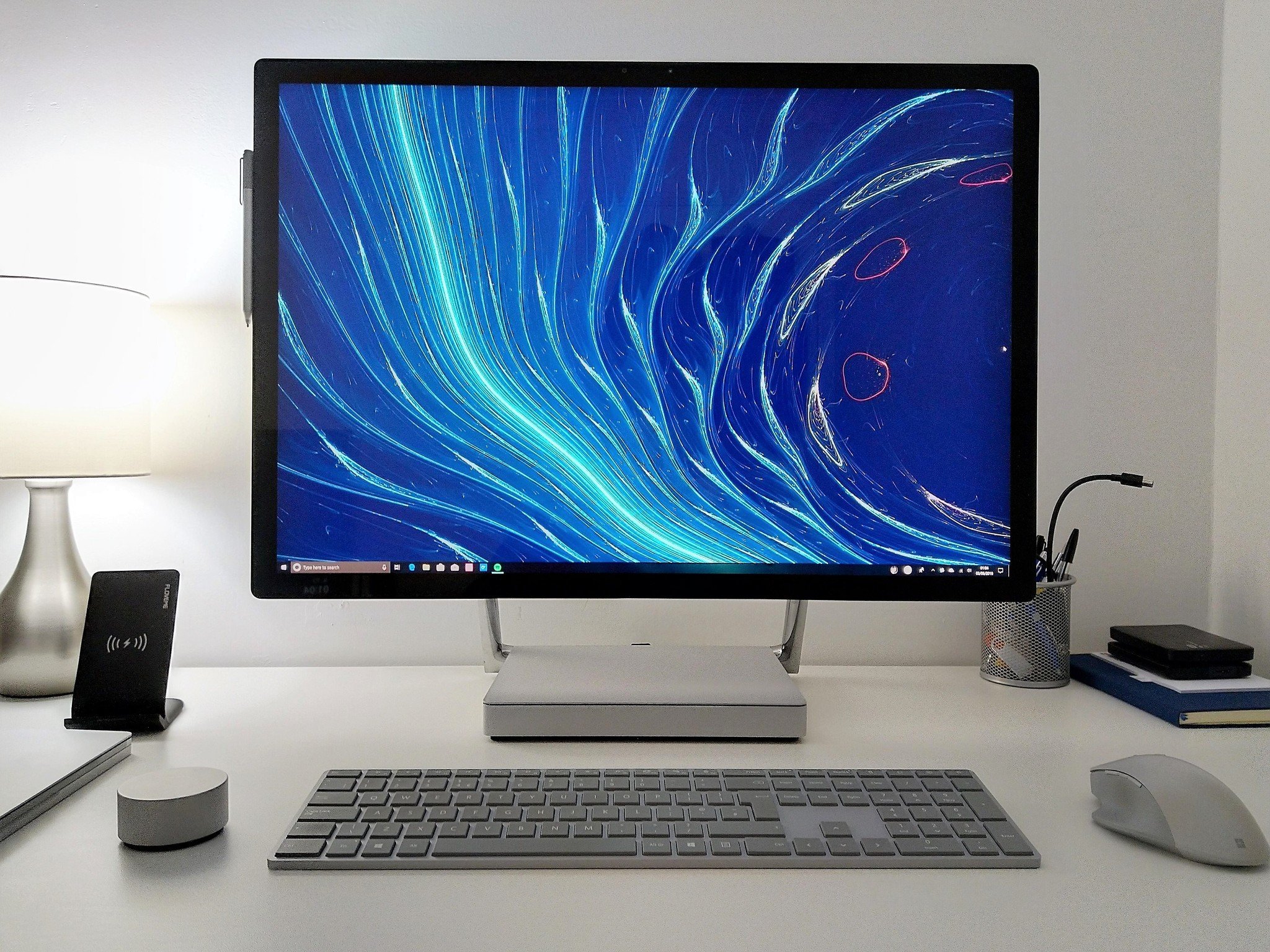
The display on the Surface Studio is by far its most stand-out feature. It's just such a beautiful display and still holds up in 2019 by a long-shot. It's a 4500x3000 resolution panel, which means Windows 10 will have to scale up its UI so that you can see it, but I find the default scaling of 200 percent to be a little too much. Everything is just slightly too big for my liking, so I usually drop the scaling to 175 percent instead.
It's a 28-inch display in the 3:2 aspect ratio, which I adore. I no longer buy 16:9 laptops or PCs, because they feel somewhat cramped. The aspect ratio makes the screen feel much larger than it actually is, which made switching from my 34-inch ultrawide monitor a much smoother transition.
Being able to pull the screen down into draft mode is super awesome. The transition is smooth, and the display feels weightless. I'm not an artist, so I don't use the Surface Studio in its draft mode nearly as much an artist would, but even as a non-artist, I've found a use for it. With my stand-up desk, when standing, I find it's sometimes much easier to use the Studio in draft mode thanks to its multitouch display which lets me poke around Windows. Sometimes using touch is just easier.
Performance
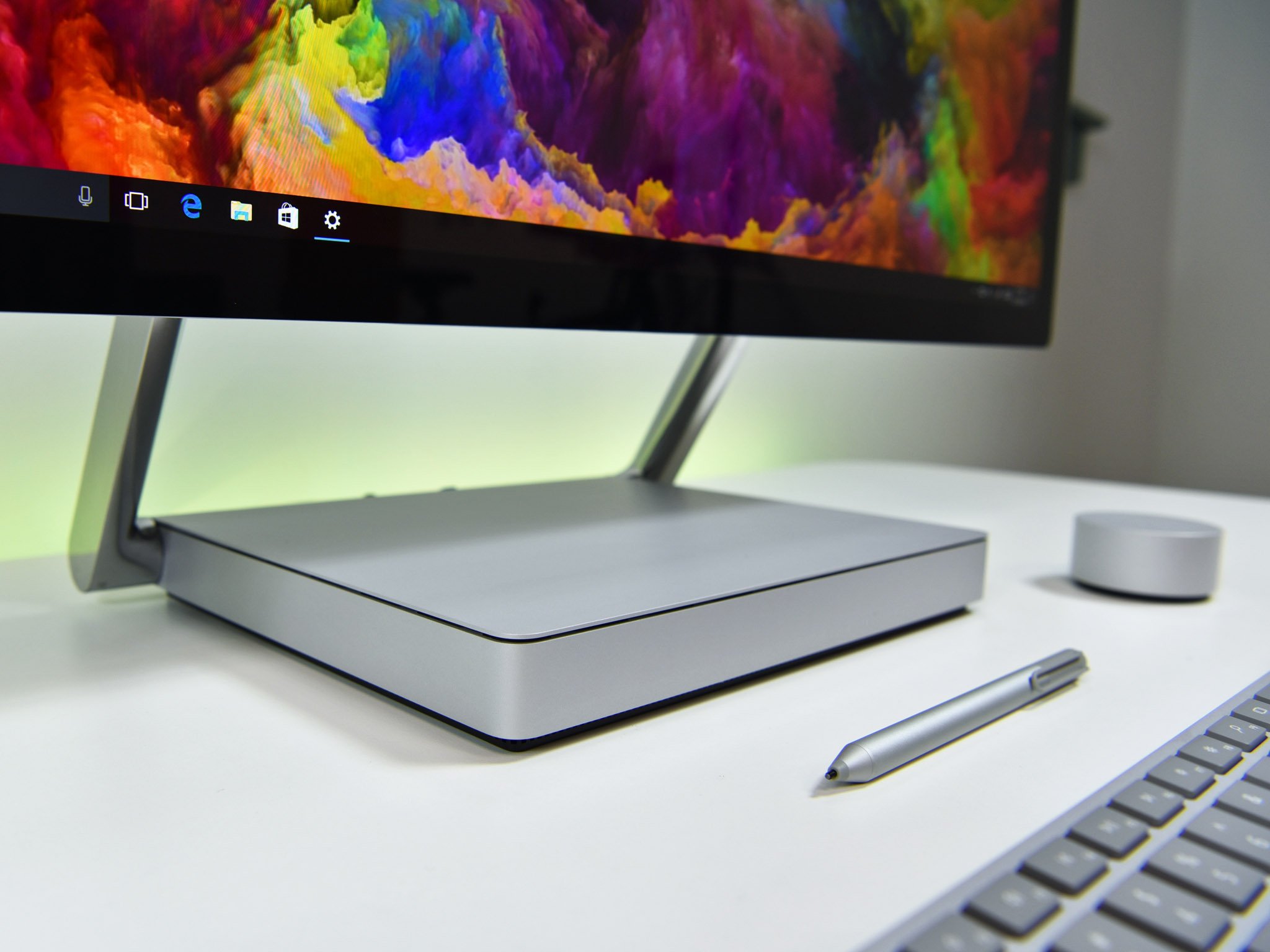
The Surface Studio was never hailed for being the most powerful PC in the world, even at launch, meaning its specifications today in 2019 aren't all that peachy. My specific configuration is rocking a 6th Gen Intel Core i7-6820HQ with 16GB RAM and a 1TB hybrid drive. It's also rocking a GTX 965M, which isn't very powerful either. It's very apparent that the specifications in the Surface Studio are its worse asset, and its a real shame, but it's not as bad as it may sound.
If I'm honest, the 6th Gen Core i7 is more than fine for even heavy tasks in 2019. I edit videos, do a bit of photoshop, and I'm usually running 10+ programs on my PC at any given time, with plenty of tabs open in Edge. The Surface Studio doesn't choke doing any of these tasks, even if the CPU is old and designed primarily for laptops. The 16GB RAM helps and is still competent even today. Of course, rendering video isn't as fast as it could be on more powerful PCs, but editing those videos is do-able.
Where the Surface Studio utterly fails is with its hybrid drive system, which frankly sucks in every way, shape, and form. It's just not good, and for the price you pay for the original Surface Studio, should never have been in there to begin with. It's an awful experience, as everything feels sluggish compared to a pure SSD system. Windows 10 itself is on the 64GB m.2 SSD, and the hybrid system will move your most used apps over to the SSD too, but everything else sits on the 1TB spinning drive, which sucks.
I noticed that things like closing windows would sometimes lag a little, for no reason. So, after a while, I decided I was going to risk it and upgrade both internal drives to something much more capable. To upgrade the drives, you have to take apart the whole base, including the heatsink and motherboard. It's such a pain, but let me tell you, the pain was absolutely worth it.
I swapped out the m.2 drive and the spinning drive for a 512GB m.2 SSD and a 512GB 2.5-inch SSD. The "hybrid" system does go away if you do this unless you do some trickery with backups and the Intel Storage drivers. I didn't bother with all that, as I was planning to use both drives separately anyway. Ever since I did this, the Surface Studio has been an absolute breeze to use. The HDD inside the Surface Studio is what holds it back more than anything. Upgrading that to an SSD improves performance dramatically, even in day-to-day use.
In regards to gaming, the Surface Studio isn't a gaming PC. Not really. The GTX 965M inside can do it, but only if you drop your resolution to around 1080p and play the game on medium to high graphics. The more expensive Surface Studio comes with a GTX 980M, which is much more capable, but still not amazing in 2019, especially compared to things like the GTX 1060 through to GTX 2080. The dedicated graphics in the Surface Studio are there more for video rendering and photoshop than pure gaming.
Final thoughts
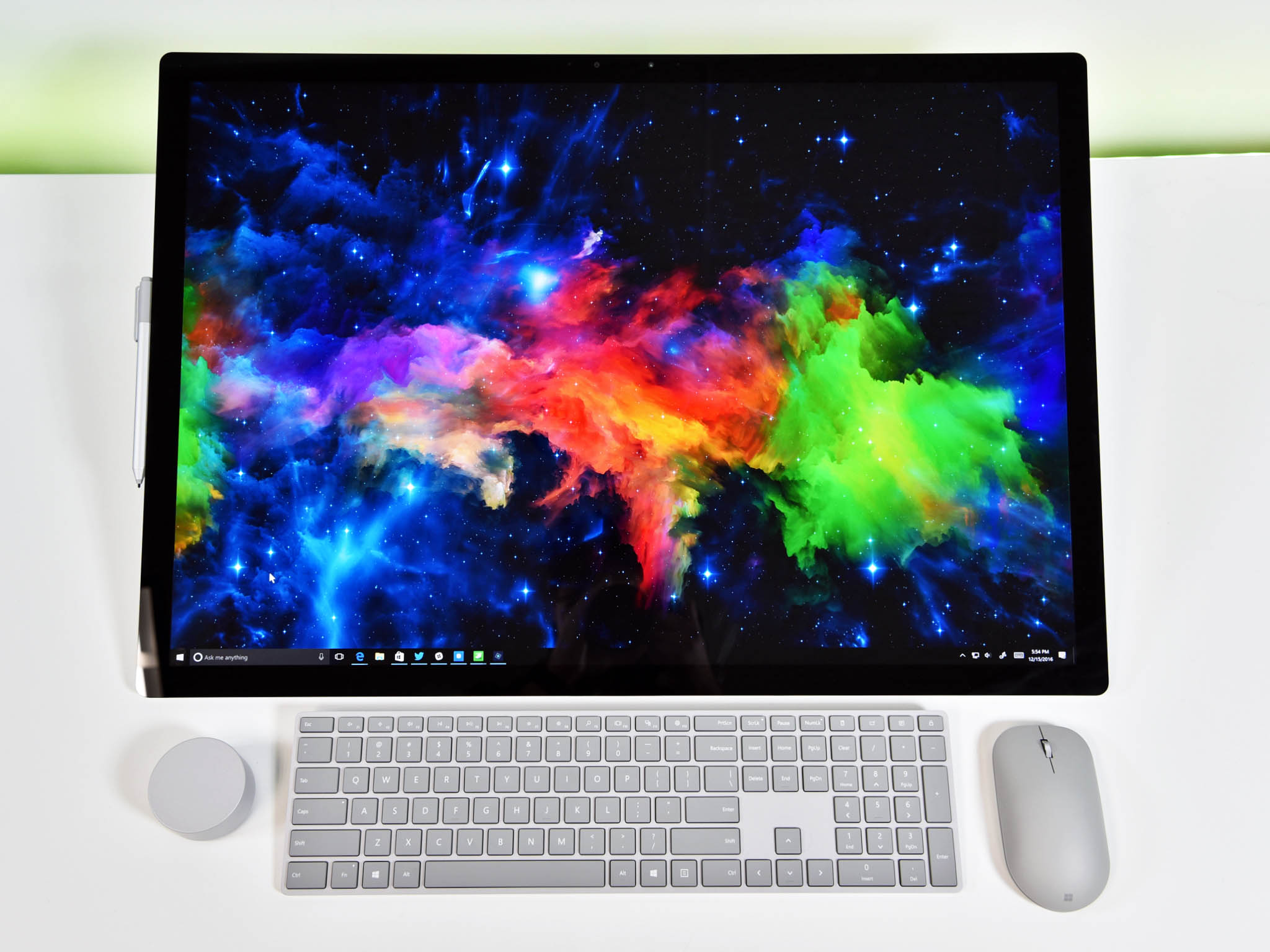
Should you buy the Surface Studio in 2019? No. That answer may be of surprise to many of you considering how much I just praised it, but that's only because I manually upgraded the internal spinning disk to an SSD. I absolutely cannot recommend this device for the price you pay with that hybrid drive system installed by default. Not in a million years.
Microsoft is still selling the Surface Studio 1 for full price too, which is unacceptable. For that price, you're better off waiting for the Surface Studio 2, which does have an SSD in it by default. The only time I'd say buying a Surface Studio 1 in 2019 is a good idea is if you can find it for less than $2000, and are willing to upgrade the drives yourself. Anyone looking for real power should probably flesh out for the new Surface Studio 2 starting at $3500 though.
Microsoft really needs to drop the price of the Surface Studio 1 in its store. It does sell refurbished models for as "low" as $2400, but that's still too much. Overall, the original Surface Studio is holding up super well for me in 2019. That is, with the manually upgraded internal drives of course. I don't think I'd be saying the same thing if I didn't have two SSDs inside the machine. That hybrid drive is the Surface Studio's Achilles heel.

